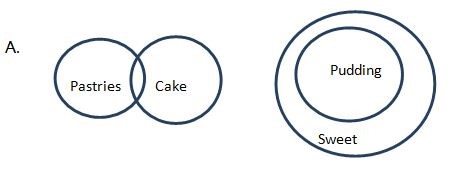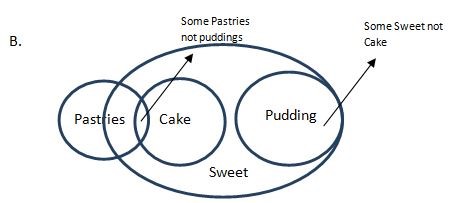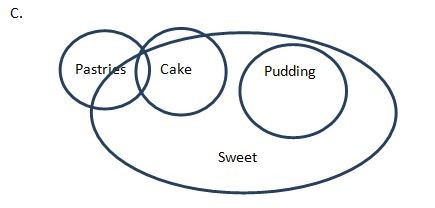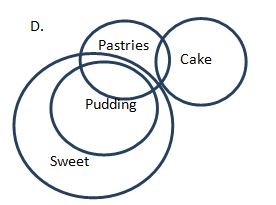Question
Statements:Some pastries are cakes. No cake is a
pudding. All puddings are sweets. Conclusions:I. Some sweets are not cakes. II. Some pastries are not puddings. In each of the questions below are given three statements followed by three conclusions numbered I and II. You have to take the given statements to be true even if they seem to be at variance with commonly known facts. Read all the conclusions and then decide which of given conclusions logically follows from the given statements disregarding commonly known facts. Give answerSolution
No cake is a pudding (E) + All puddings are sweets (A) ⇒ some sweets are not cakes (O*). Hence, conclusion I will follow. Some pastries are cakes (I) + No cake is a pudding (E) ⇒ some pastries are not puddings (O). Hence, conclusion II will also follow. ALTERNATE METHOD: Possible cases: 


 In all the cases, I and II both follow.
In all the cases, I and II both follow.
Global warming potential of methane is
Wheat crop is irrigated with 6cm depth of irrigation water with IW/CPE ratio of 0.6. Calculate the CPE at the time of irrigation.
The condition where the plant is unable to produce a zygote with its own pollen is called as?
Which of the following weed is responsible for dropsy disease?
The method in which seed is sown and closed by soil in a regular process?
Rank of Rajasthan in goat population, among all states of India, as per latest livestock census is-
With reference to Food Fortification in India, which of the following statements is correct:
Among the followings, nitrification inhibitor is
What is the correct definition of "Economic Injury Level (EIL)"?
ICRISAT conducts agricultural research for development in-
Relevant for Exams:


